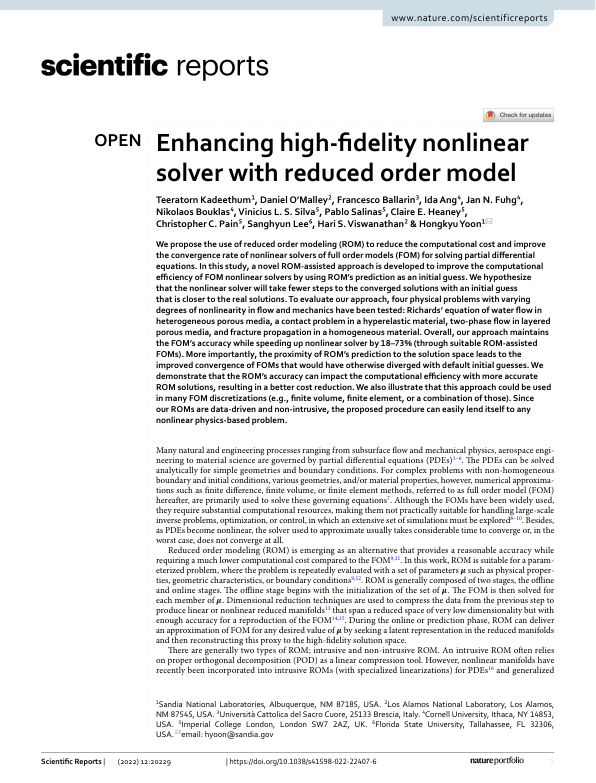Enhancing high-fidelity nonlinear solver with reduced order model
Published in Scientific Reports, 2022

Abstract
We propose the use of reduced order modeling (ROM) to reduce the computational cost and improve the convergence rate of nonlinear solvers of full order models (FOM) for solving partial differential equations. In this study, a novel ROM-assisted approach is developed to improve the computational efficiency of FOM nonlinear solvers by using ROM’s prediction as an initial guess. We hypothesize that the nonlinear solver will take fewer steps to the converged solutions with an initial guess that is closer to the real solutions. To evaluate our approach, four physical problems with varying degrees of nonlinearity in flow and mechanics have been tested: Richards’ equation of water flow in heterogeneous porous media, a contact problem in a hyperelastic material, two-phase flow in layered porous media, and fracture propagation in a homogeneous material. Overall, our approach maintains the FOM’s accuracy while speeding up nonlinear solver by 18–73% (through suitable ROM-assisted FOMs). More importantly, the proximity of ROM’s prediction to the solution space leads to the improved convergence of FOMs that would have otherwise diverged with default initial guesses. We demonstrate that the ROM’s accuracy can impact the computational efficiency with more accurate ROM solutions, resulting in a better cost reduction. We also illustrate that this approach could be used in many FOM discretizations (e.g., finite volume, finite element, or a combination of those). Since our ROMs are data-driven and non-intrusive, the proposed procedure can easily lend itself to any nonlinear physics-based problem. © 2022, The Author(s).
